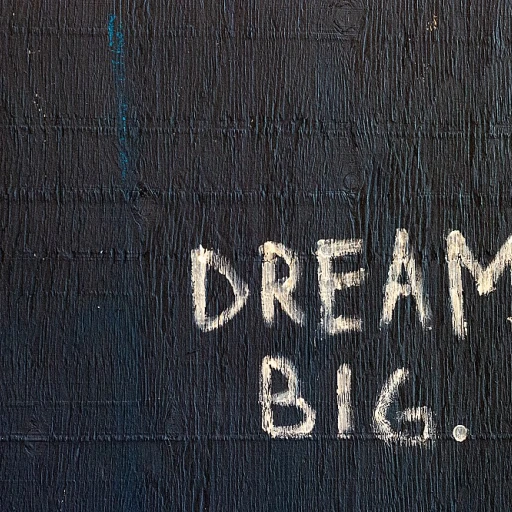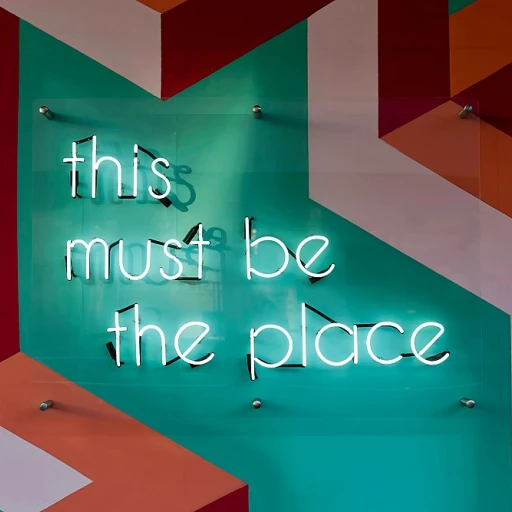Understanding Developmental Goals
Foundations of Developmental Goals
To facilitate a deeper understanding of developmental goals, it's essential to grasp their intrinsic role in the professional landscape. Developmental goals serve as strategic components for enhancing both personal growth and organizational success. These goals are meticulously crafted to focus on improving an employee's skills, knowledge, and overall performance within the workplace.
Developmental goals are not just about individual achievement; they play a pivotal role in fostering long-term career growth and job satisfaction, which are key drivers in employee retention. By focusing on professional development, employees are not only empowered to refine their leadership and communication skills but are also motivated to achieve their long-term career aspirations.
When organizations set precise and attainable developmental goals, employees are encouraged to enhance their existing skills and acquire new competencies that are aligned with the company's strategic objectives. These goals can vary in nature, ranging from short-term, time-bound objectives to more expansive long-term ambitions. Examples of effective developmental goals often include improving project management abilities, honing time management practices, and boosting public speaking proficiency.
Moreover, a structured approach to goal setting, such as the implementation of SMART goals—Specific, Measurable, Achievable, Relevant, and Time-bound—can offer a reliable framework to guarantee that employees' effort and development work align with the organizational mission.
To delve deeper into strategies for achieving successful talent retention through developmental goals, explore
unveiling the secrets of talent retention. This resource provides further insight into how developmental goals contribute to a sustainable and thriving workplace environment.
The Role of Developmental Goals in Employee Retention
Integrating Developmental Goals into Retention Strategies
To effectively enhance employee retention, the incorporation of developmental goals into your retention strategy is crucial. These goals not only cater to the growth and development of employees but also align with the organization's workforce retention objectives. Let's delve into how developmental goals play a pivotal role in holding onto talented employees.
Developmental goals serve as a bridge between the current skill sets and the desired professional trajectory of employees. By fostering a culture of continuous improvement and goal setting, employees are encouraged to set both short-term and long-term career goals. These may include enhancing specific skills like leadership and communication, or gaining expertise in areas such as project management and time management. Such preparatory steps help in sculpting a career path that aligns with the organizational vision.
Moreover, setting clear and attainable goals leads to enhanced job satisfaction and a sense of purpose in the workplace. Employees, when involved in professional development, feel valued and supported, which significantly boosts their morale and engagement. Creating specific, measurable, achievable, relevant, and time-bound goals (SMART goals) ensures that both the employee and the management have a clear understanding of expectations and progress.
Management also plays a critical role. By supporting skills development through structured training programs and individual goal setting sessions, they create an environment ripe for personal and professional growth. This management support helps in refining employees' decision-making abilities and performance levels, ultimately leading to a motivated team that is committed to the organization’s success.
The integration of these developmental goals into strategic retention efforts requires continuous monitoring and adaptation. By assessing the effectiveness of different goals and training initiatives, organizations can better understand their impact on retention rates. For further insights, refer to an informative guide on
the role of employee assessment tools in retention.
In summary, embedding developmental goals into retention strategies cultivates a robust framework for nurturing talent, aligning employee objectives with organizational goals, and ultimately reducing turnover rates.
Examples of Effective Developmental Goals
Practical Examples of Development Goals
Development goals play a pivotal role in fostering an engaging work environment and enhancing employee retention. Setting clear, practical examples of these goals can aid in improving employee skills and enhancing their professional journey.
- Professional Development & Training: Encouraging employees to undertake regular training sessions to enhance their existing skills or acquire new ones can effectively boost performance. This could include courses on public speaking, time management, or industry-specific software. Offering these programs demonstrates a commitment to ongoing professional development and can significantly contribute to employee satisfaction and retention.
- Improving Leadership Skills: Developing leadership capabilities is essential, not only for those in management roles but across all levels. Employees can engage in leadership workshops or serve as project leads to hone decision-making and team management skills. Setting leadership development as a goal helps prepare employees for potential advancement opportunities, supporting long-term career aspirations.
- Enhancing Communication Skills: Effective communication is crucial in any work setting. Employees can work on improving both verbal and written communication skills through workshops or mentoring. This not only improves individual performance goals but also facilitates better team cohesion and project management.
- Mastering Time & Project Management: Encouraging employees to focus on their time management and project management skills can elevate their efficiency and work performance. Establishing specific, time-bound development goals in these areas can help employees effectively manage their workloads and contribute more meaningfully to team objectives.
- Career Planning & Goal Setting: It’s important to align individual career aspirations with organizational objectives to ensure mutual growth. Employees should have development goal reviews to set both short-term and long-term career goals, aiding them in visualizing a future with the company.
By providing these development goals examples, organizations not only nurture potential but also reinforce a sense of loyalty and job satisfaction among their employees, leading to improved retention rates. For a deeper dive into setting effective development objectives, explore
examples of development objectives for employee retention.
Aligning Developmental Goals with Organizational Objectives
Integrating Developmental Goals with Organizational Aims
Aligning developmental goals with organizational objectives is crucial to fostering a culture where employees feel that their growth is parallel to the company's purpose. This alignment not only enhances individual performance but also contributes to broader organizational success. Here’s how to ensure effective integration:
- Identify Core Objectives: Understand the organization's strategic direction and long-term goals. By doing so, you set the stage for tailoring employee development goals that support these broader aims.
- Customize Development Plans: Employees’ professional development goals should be customized to meet both their career aspirations and the organization’s objectives. Offering tailored training programs addressing individual skills and broader team productivity can make a huge impact.
- Bridge Skill Gaps: Focus on identifying specific skills gaps that prevent the organization from achieving its goals. Tailor development goals to address these gaps through targeted training and mentorship programs. This not only builds employee capability but aligns with the organization’s needs.
- Encourage Leadership Development: Cultivate aspiring leaders by setting leadership-focused goals. Such goals prepare employees for roles that will drive the organization’s mission in both short-term and long-term contexts.
- Enhance Collaboration Through Team Goals: Encourage goals that enhance team communication skills and collaborative work environments. Projects that require effective management and decision-making are often crucial to organizational success and team cohesion.
- Develop SMART Goals: Set goals that are Specific, Measurable, Achievable, Relevant, and Time-bound (SMART). This ensures clarity in how employees’ work feeds into the organizational objectives.
Aligning personal development goals with organizational objectives facilitates a healthier work-life balance, elevates motivation, and drives overall retention. Strategic goal setting, addressing both individual career goals and company needs, creates a mutually beneficial dynamic fostering engagement and loyalty.
Challenges in Implementing Developmental Goals
Overcoming Obstacles in Implementing Developmental Goals
Implementing developmental goals is not without its challenges. These obstacles can hinder both the employee’s professional growth and the organization’s goal to enhance retention. Here are some common issues faced and how they can be addressed:
- Lack of Clear Structure: Often, organizations struggle with setting clear and actionable goals. To overcome this, it's critical to employ SMART goals—specific, measurable, achievable, relevant, and time-bound. This ensures that goals are not only understood but can also be tracked over time, helping in both short-term and long-term career development.
- Insufficient Support and Resources: Employees may lack the necessary training or support to pursue their developmental objectives. Companies must invest in professional development programs, such as workshops to improve communication skills or seminars on project management, which reinforce the skills employees need.
- Time Management Conflicts: Balancing developmental goals with day-to-day responsibilities can be overwhelming. Encourage effective time management strategies, helping employees prioritize tasks, and allocate time efficiently for both work obligations and skill enhancement.
- Misalignment with Organizational Objectives: Sometimes developmental goals don’t align with company priorities. It is essential for management to regularly review and align these goals with organizational objectives. This alignment not only aids in strategic goal setting but ensures employee development translates into tangible business improvements.
- Resistance to Change: Employees and teams might resist new developmental initiatives if they perceive them as unnecessary or disruptive. A leadership approach that involves employees in the decision-making process can help mitigate this, ensuring goals set are both relevant and engaging for all parties involved.
Addressing these challenges effectively requires thoughtful planning and continuous adjustment. Organizations can harness these strategies to enhance career opportunities, improve team dynamics, and ultimately, boost employee retention. Embracing developmental goals is the foundation of an empowered and motivated workforce.
Measuring the Impact of Developmental Goals on Retention
Evaluating the Influence of Developmental Goals on Employee Retention
Measuring the impact of developmental goals on employee retention requires a nuanced approach that encompasses several dimensions of the work environment. Developmental goals focusing on skill enhancement and career advancement have the potential to significantly improve employee retention rates when effectively implemented.
- Performance and Skill Improvement: Anecdotal evidence and various studies suggest that when employees see tangible improvements in their skills and performance as a result of the developmental goals set for them, their sense of commitment to the organization increases. This underscores the significance of setting smart goals that are specific, measurable, attainable, relevant, and time-bound.
- Career Progression and Goal Alignment: By aligning developmental goals with employees' career aspirations and ensuring they resonate with the organization's objectives, management can foster a culture of professional growth. This alignment helps employees perceive a pathway to long-term career advancement within the company, which can keep them motivated and engaged.
- Feedback and Decision Making: Regular feedback from supervisors and mentors regarding the progress of set goals not only helps improve performance but also enhances decision-making capabilities among employees. Training sessions aimed at improving public speaking and communication skills, for instance, are examples of professional development that reinforce confidence and leadership potential.
- Time Management and Work-Life Balance: Effective goal-setting practices should also consider employees' personal development goals, balancing the demands of work with life obligations. When goals set within a professional context take into account individuals' personal time management needs, it enhances overall job satisfaction, thus influencing retention positively.
- Team Dynamics and Leadership Support: It is crucial for team leaders to play an active role in nurturing the developmental goals of their team members. Leadership support can act as a catalyst for employees to pursue their goals enthusiastically, thereby embedding a deep commitment to the organization.
In managing these objectives, organizations face various challenges, such as resource allocation and maintaining ongoing support for employee development initiatives. Continuous assessment and strategic adjustments can help address these issues, enabling both short-term gains and the achievement of long-term retention targets.
Ultimately, a conscious effort to measure the impact of development goals involves not only monitoring employee engagement and performance metrics but also recognizing the broader cultural shifts within the organization that point toward increased employee satisfaction and reduced turnover.













